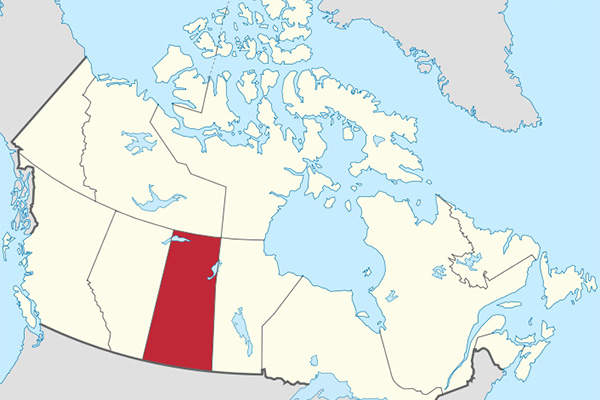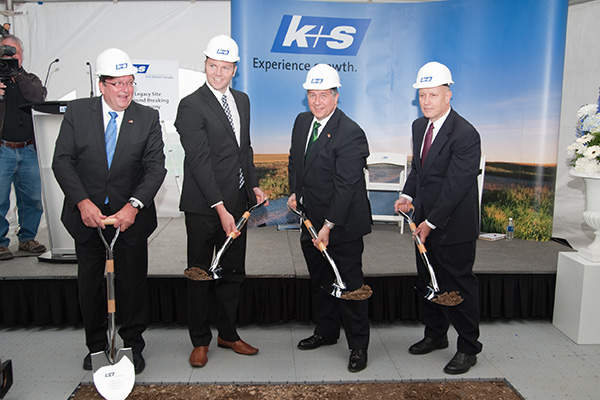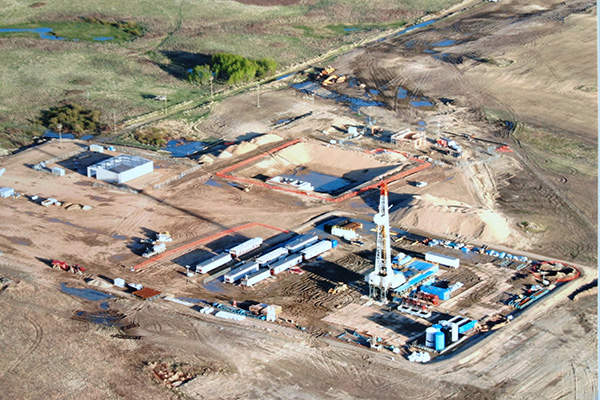A subsidiary of K+S Group, K+S Potash Canada (KSPC), is the owner of the Bethune Potash mine (earlier Legacy Potash project) being developed near Moose Jaw, Saskatchewan in Canada. The Legacy Potash project was renamed Bethune Potash mine in May 2017.
The project features two of the top ten deepest mines in the world. The advanced greenfield project is the first solution mine to be built in Saskatchewan in around 40 years. The project is also referred to as Bethune mine.
Construction of the potash mine began in June 2012. The mine was opened in May 2017 and produced the first tonnes of marketable potash in June 2017.
The Bethune potash mine has an estimated mine life of more than 55 years and the project involves a capital cost of approximately $4.1bn and creates more than 400 permanent jobs.
Bethune Potash mine geology and reserves
The Bethune potash project was originally initiated by Potash One, which was acquired by K+S in November 2010. The mine is located approximately 50km north of Moose Jaw in Saskatchewan, which contains 50% of the world’s potash reserves.
The potash deposits found in Saskatchewan are believed to have formed more than 350 million years ago as a result of the final stage of evaporative concentration of seawater in a middle Devonian sea.
The mine is expected to contain proven and probable reserves of 160Mt of final potash product at a grade of 29% potassium chloride and 18% of potassium oxide (K2O). The indicated and inferred resources are estimated as 981Mt of potassium chloride.
Mining and ore processing
A solution mining method is applied at the Bethune potash mine. The process involves dissolving underground water-soluble minerals with water, commonly referred to as brine. The water is then extracted from the ground and the contained minerals are recovered from it.
This project involves two mining phases, primary and secondary. The primary method uses fresh water, which is injected into the ground through two boreholes. The fresh water is mixed with the potash-bearing salt rock. Two single circular caverns were formed, approximately 80m apart and 1,500m below the surface.
In the secondary phase, the mine uses a sodium chloride-saturated brine to selectively dissolve the potassium chloride from the walls and roof of the caverns. The sodium chloride solution is injected below the Esterhazy seam and the deposit will be solution-mined up to 3m thick horizontal layers.
The potash brine solution from the underground is transported to surface through two boreholes and processed further. The mine comprises approximately 36 production caverns for drawing the potash brine solution to the surface.
Related project
BHP Billiton Burr Project, Canada
The Burr project is located 140km east of Saskatoon in Saskatchewan, Canada. Owned by BHP Billiton, the property is spread over an area of 79,946 acres in the potash sweet spot, which is also called the conventional mining corridor.
The processing plant is expected to reach full capacity of 2.86Mt a year by 2023. Further expansion to 4Mt a year of potassium chloride is expected after an initial ten-year period.
From the solution extracted through the primary mining method, potassium chloride is recovered using vacuum cooling crystallisation process. It is recovered from the secondary mining solution using a crystallisation pond
Potash handling and storage facility
Potash products from the mine are transported by rail to the bulk handling terminal in Port Moody, British Columbia.
KSPC, in collaboration with Pacific Coast Terminals (PCT), opened the potash handling and storage facility in August 2017. The product is stored on-site and loaded to vessels for delivery to international clients.
In September 2017, 13,000t of MOP standard potash was transported from the Bethune mine for the first time to the potash handling and storage facility.
The first ship carrying 30,000t of potash left the handling and storage facility in October 2017 to supply potash for customers in Asia.
Construction and infrastructure facilities
Major construction works at the Bethune potash mine consist of earthworks, piling activities, clearing of plant site and offsite utility works.
Works also comprised of the construction of potash handling facility at the bulk handling terminal in Port Moody, British Columbia. The facility consists of related infrastructure, a new railcar unloading station, new covered conveyor systems, control dust emission system, and a new storage warehouse.
Water supply for the mine is provided from the Buffalo Pound Lake.
Offtake of potash
KSPC entered an agreement with Koch Fertilizer for the supply of up to 450,000t of granular potash per annum.
Bethune project contractors
The engineering, procurement, construction and management contract for the project was awarded to AMEC Americas. The contractual scope includes project management, detailed engineering and construction management services for the production facility, as well as commissioning and project management services for the mining, processing and site infrastructure facilities.
Associated Engineering was awarded the design and project management contract for the project, whereas MGM was engaged to provide marketing and communications services.
Schweitzer Engineering Laboratories (SEL) won the contract for providing relays and communications products. Veolia Water Tech designed and supplied equipment for the evaporation, crystallisation and clarification plants.
Tron Power, through its subsidiary March Consulting, was engaged to provide construction services for the potash mine. The contractual scope includes the pilot plant test facility construction, installation of 25kV power line, 13km of pipeline and construction of pump house and valve house.
Canadian Pacific was awarded a contract for transporting potash from the mine site to a Western Canadian port, to export the product to overseas destinations. Pacific Coast Terminals is responsible for the handling and storage of the potash products.







